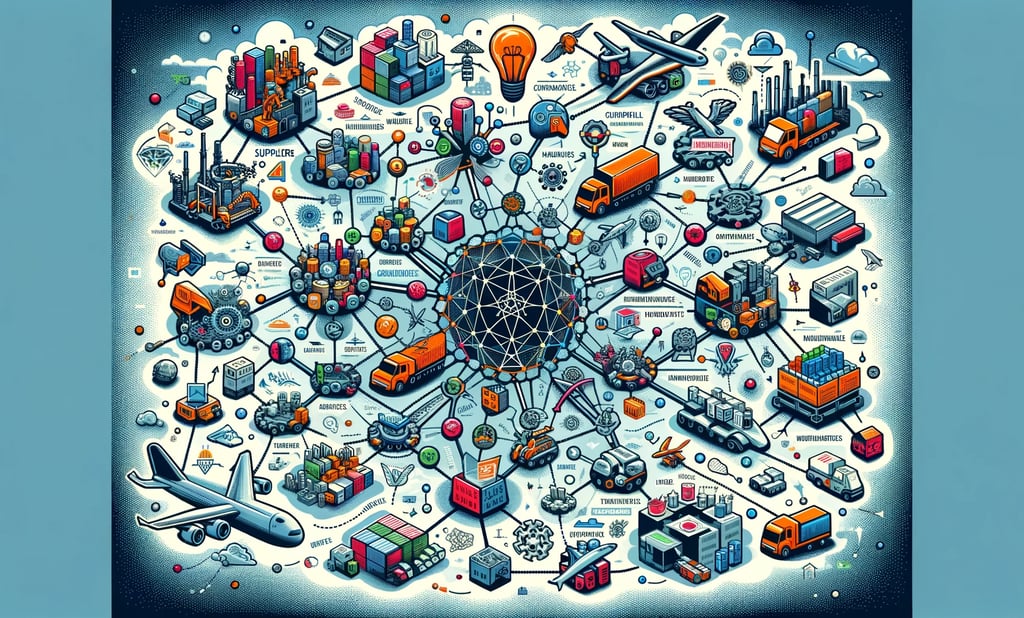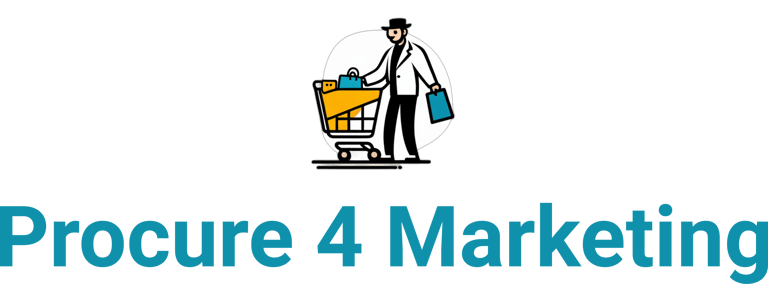Introduction to Supply Chain Networks.
What is a supply chain network? This guide explains the key components (nodes) and connections (links) that power our global economy, using a simple example.
SUPPLY CHAIN
The Procure 4 Marketing Team
11/27/20233 min read


Quick Answer: What is a Supply Chain Network?
A supply chain network is the interconnected system of organizations, resources, activities, and technologies involved in creating a product and delivering it to the end customer. Think of it like a map: it consists of "nodes" (places like factories, warehouses, and stores) and "links" (the transportation, information, and financial flows that connect them). A well-designed network ensures goods move efficiently from raw materials to the consumer.
What are the 5 Key Components (Nodes) of a Supply Chain Network?
The "nodes" are the critical checkpoints in a supply chain where a product is sourced, made, stored, or sold. Let's trace the journey of a laptop computer through these nodes.
Suppliers: These are the starting points that provide the raw materials or individual components. For a laptop, this includes dozens of global suppliers providing everything from the silicon for the microprocessor to the plastic for the casing and the lithium for the battery.
Manufacturers: These are the factories that transform the raw materials and components into a finished product. A laptop might have its screen made in one country, its processor in another, and then all the parts are sent to a final assembly plant in a third country.
Warehouses & Distribution Centers: Once assembled, the laptops are shipped in bulk to these storage facilities. Here, inventory is managed, and large shipments are broken down into smaller ones to be sent to retailers.
Retailers: This is the node where customers can access the product. It can be a physical store (like Best Buy), an online store (like Amazon), or even the manufacturer's own website (like Dell.com).
Consumers: The final node in the network is the customer. Their purchase drives the demand for the entire network, and their feedback influences future product design and inventory levels.
How are the Nodes Connected? (The Links)
The "links" are the vital connections that allow goods, information, and money to flow between the nodes, turning separate locations into a cohesive network.
Transportation & Logistics: This is the physical movement of goods. It includes the trucks, ships, airplanes, and trains that carry components to the factory, finished laptops to warehouses, and finally, the package to a customer's home.
Information Flow: This is the digital backbone of the network. It includes real-time data on inventory levels, demand forecasts from retailers, delivery schedules, and tracking information. Efficient information flow is crucial for coordination.
Financial Flow: This includes the financial transactions that fuel the network, such as payments to suppliers for raw materials, payments to logistics companies for shipping, and payments from customers for the final product.
What Makes a Supply Chain Network Successful?
A successful modern supply chain network must be more than just efficient; it must be:
Resilient: Able to anticipate, withstand, and recover from disruptions like natural disasters, political turmoil, or pandemics.
Agile and Responsive: Able to adapt quickly to changes in market demand or consumer behavior.
Sustainable and Ethical: Focused on reducing its environmental impact and ensuring fair labor practices throughout the network, as consumers increasingly demand transparency.
How is Technology Shaping Supply Chain Networks?
Technology is the primary enabler of modern, efficient supply chain networks.
Management Software: Enterprise Resource Planning (ERP) and Supply Chain Management (SCM) software act as the central brain, providing a unified view of the entire network.
Artificial Intelligence (AI): AI is used for advanced demand forecasting, optimizing logistics routes, and predicting potential disruptions before they happen.
Internet of Things (IoT): Sensors on containers, trucks, and products provide real-time data on location, temperature, and condition, offering unprecedented visibility.
Blockchain: This technology can create a transparent and unchangeable record of a product's journey, which is invaluable for ensuring authenticity and ethical sourcing.
Frequently Asked Questions (FAQ)
Q1: What's the difference between a supply chain and a supply chain network?
The terms are often used interchangeably. However, a "supply chain" can imply a simple, linear flow (Supplier → Manufacturer → Retailer). A "supply chain network" is a more accurate modern term that describes a complex, multi-layered system with many interconnected suppliers, distribution centers, and retail channels, all working together in a web-like structure.
Q2: What is "end-to-end visibility" in a supply chain network?
End-to-end visibility is the ability to track a product and its related information from the very beginning of the supply chain (the raw material supplier) all the way to the final delivery to the consumer. Technologies like IoT and blockchain are key to achieving this.
Q3: What is a "logistics hub"?
A logistics hub is a central point in a supply chain network where goods are stored, sorted, and redistributed. A large distribution center or a major port with many transportation connections (sea, rail, road) is a type of logistics hub.

